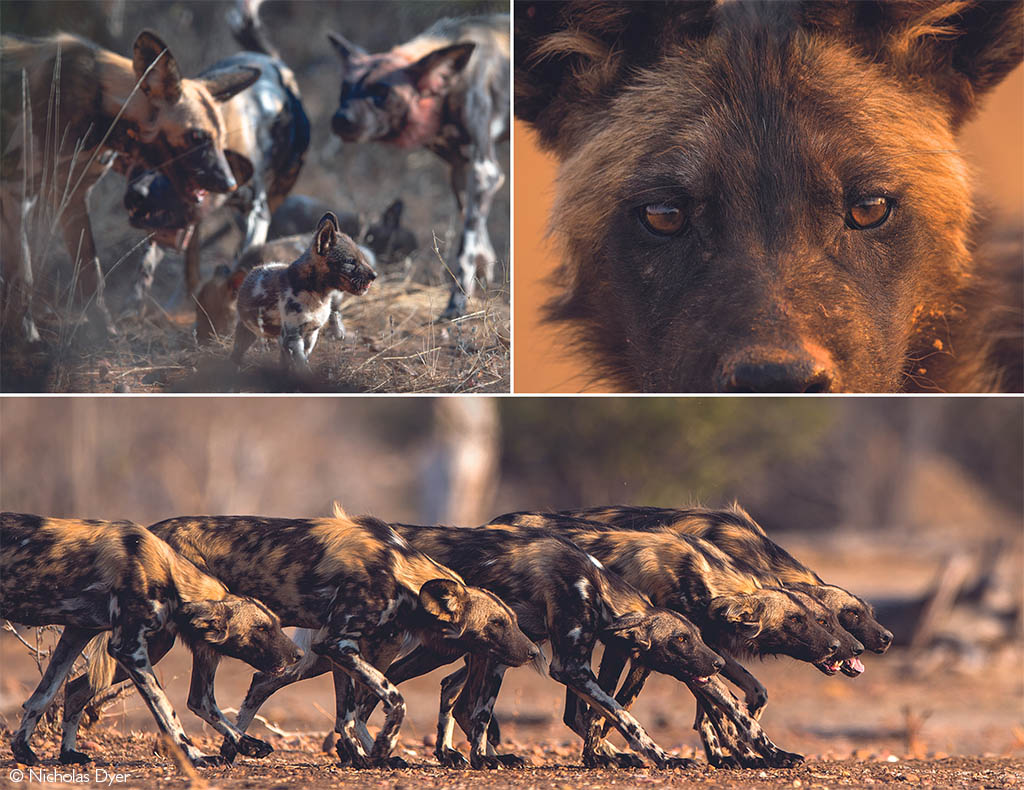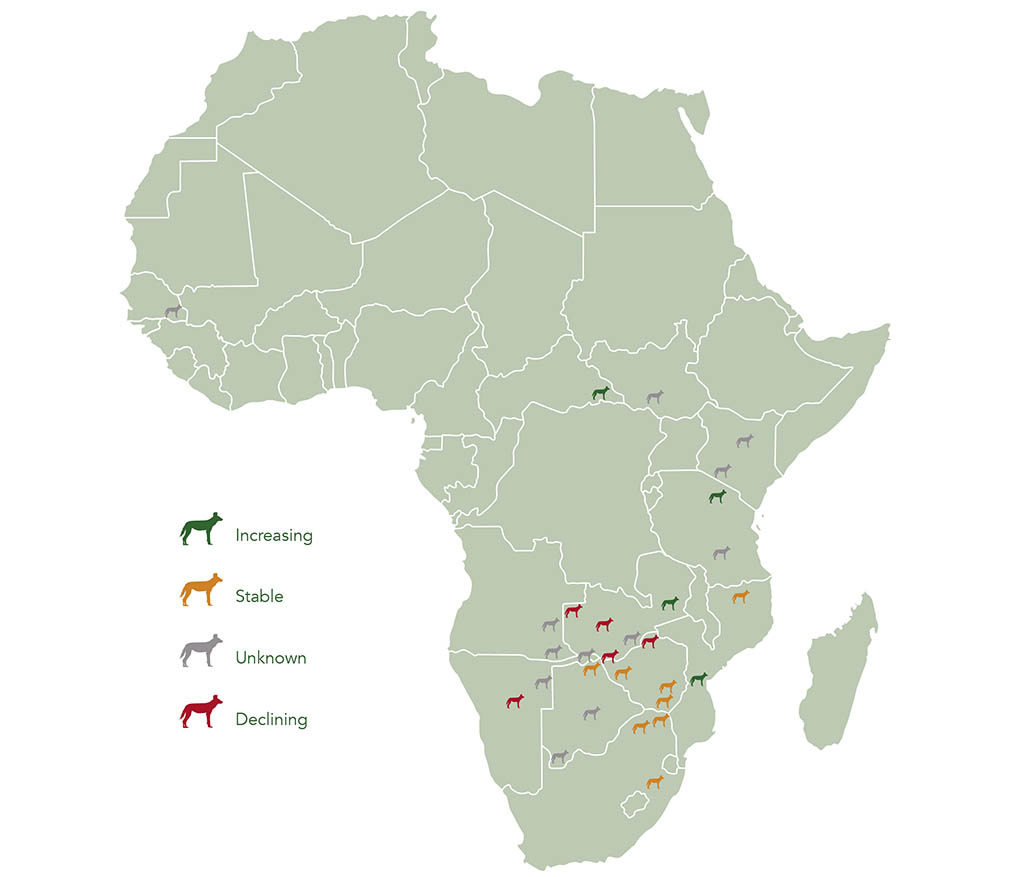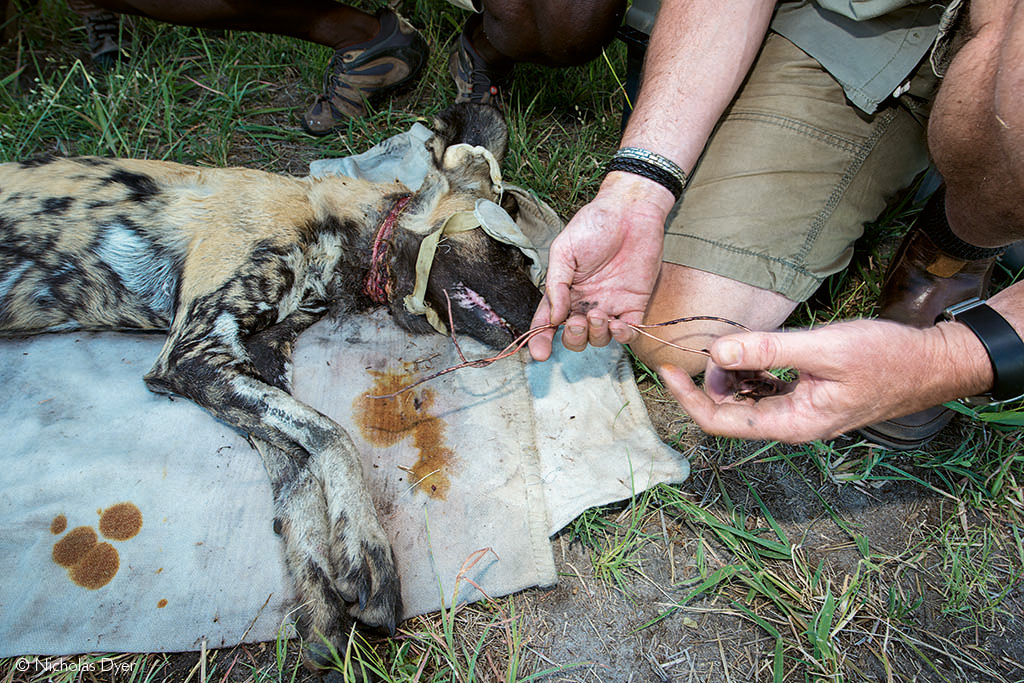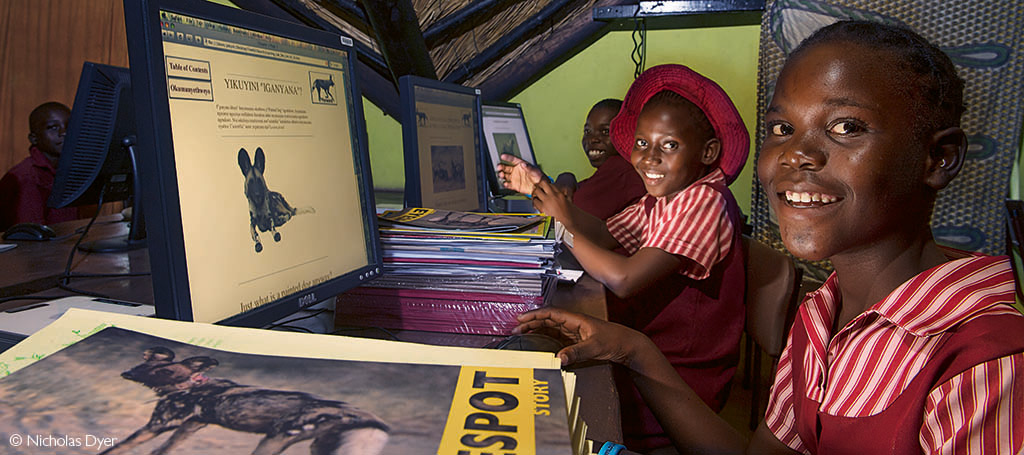
Could African wild dog (painted wolf) populations double by 2050? A theory of change offered in a new report proposes it may be possible to save one of Africa’s most endangered carnivores – through collaboration, recovering former territory and improved funding. These athletic predators have suffered centuries of persecution, and the space available to them is ever-shrinking. How are wild dogs faring across Africa, and what can be done to secure their future? Conservationists and scientists from the Painted Wolf Foundation have compiled a comprehensive assessment of the state of painted wolf conservation – from population estimates to conservation strategies – and hypothesise that numbers could double in the best-case scenario.
The method
Executive director of the Painted Wolf Foundation Diane Skinner identified and approached 37 individuals from 28 organisations operating in 12 African countries. Where possible, the organisations selected are directly involved in monitoring and conserving painted wolves or are responsible for managing protected areas within their range. Collectively, these organisations cover over 800,000km2 (80 million hectares) of painted wolf habitat – home to at least 4,500 wild dogs.
The 145-page report – Securing the Future of the Painted Wolf – looks into the broader conservation landscape of painted wolves, and includes a breakdown by country.

The findings
Painted Wolf Foundation has estimated the current population numbers as below, providing an anecdotal snapshot in time. These numbers and the direction of change reflect those taken during 2020, at the time of consultation.
The largest populations of painted wolves of the areas surveyed occurred in:
- Luengue-Luiana National Park (Angola): ±600
- Northern Botswana: 700–800
- Niassa Special Reserve (Mozambique): 300–350
- The Kruger Ecosystem (South Africa): 250–400
- The Ruaha Landscape (Tanzania): ±500
- The Luangwa Valley Ecosystem (Zambia): ±300
- The Zambezi Valley (Zimbabwe): ±250
[Editorial note: at the time of research, detailed information about the population in the Selous/Nyerere Ecosystem (Tanzania) was not available. However, assessments from 2012 suggested this region was home to one of the largest populations of painted wolves in Africa at the time.]
Populations are believed to be increasing in:
- Aire de Conservation de Chinko (Central African Republic)
- Gorongosa National Park and surrounds (Mozambique) [Editorial note: painted wolves were reintroduced to the national park in 2018.]
- Private reserves in South Africa as part of the Wild Dog Range Expansion Project
- The Serengeti Ecosystem (Tanzania)
- Luangwa Valley Ecosystem (Zambia)
Populations are believed to be decreasing in:
- Okamatapati and Otjituuo Conservancies (Namibia)
- Greater Kafue Ecosystem (Zambia)
The remaining populations are either stable, or their status is unknown (but likely decreasing in many of the regions surveyed).

The threats
The report identifies the major threats facing wild dogs across Africa. Naturally, these are region-specific (take, for example, this case of a declining dynasty in Mana Pools), and certain threats may be more significant than others. However, a common theme is habitat loss and fragmentation – one of the greatest threats to wildlife in Africa. This is particularly true in the case of the painted wolf, which is a wide-ranging species that occurs at low population densities. In South Africa, for example, painted wolves once roamed the entire country but are now restricted to just a fraction of their historic range (a comparative map of former and present ranges can be found here).
Painted wolves are also victims of the illegal bushmeat trade, as snares and gin traps intended for antelope are indiscriminate. Outbreaks of diseases such as distemper or rabies, carried by domestic dogs, can wipe out entire packs. Road accidents are also common causes of wild dog mortalities in some areas. Conflict with farmers occurs throughout the painted wolf range, even though their reputation as mass livestock killers far exceeds their actual impact.
All of the above threats are exacerbated by the fact that wild dogs struggle to persist with high densities of competing predators like lions and spotted hyenas. As most of Africa’s wildlife is now concentrated in protected areas, painted wolves are forced to exist on the periphery of these regions, increasing their chances of encountering anthropogenic threats.


African wild dog conservation gaps
While celebrating the impressive efforts of various conservation initiatives working to protect wild dogs, the report shows that, when looking at the species as a whole, the best that can be said is their numbers are somewhat stable. In many areas across their range, numbers are decreasing, while in others, there are yawning gaps in knowledge about numbers, status, and movements. The threats facing this charismatic species are not dissipating and will become more severe as the human population burgeons, exacerbating habitat loss.
So how to shift the paradigm from individually treading water to safely increasing painted wolf rangelands and supporting the species across the continent? The report’s authors first pinpointed the conservation gaps – where tried and tested conservation measures are not deployed due to a lack of funding, knowledge, or expertise. These include macro issues such as a lack of effective habitat management and comprehensive community engagement and education. Filling these gaps would help create protected landscapes where all wildlife, including painted dogs, can thrive.
However, conservation of painted wolves requires species-specific interventions to address the micro issues, such as the management of disease outbreaks or denning behaviour close to hostile communities. In many areas, the organisations attempting to protect painted wolves lack technical resources or funding (or both). In others, there are no organisations specifically directing their attention to wild dog conservation. Even though there are existing conservation methods that have proved highly effective, there are few mechanisms whereby nascent organisations learn these methods or benefit from the experiences of others.

Embedded constraints
In addition to identifying conservation gaps, the report also points to constraints within painted wolf conservation initiatives. These include the image and perception of painted wolves (as vermin, feral dogs), the need for a unifying global voice, and strategic collaboration to share day-to-day challenges and solutions for shared learning.
The most significant constraint is, unsurprisingly, funding and fundraising. The Painted Wolf Foundation report roughly estimates that painted wolves across the entire continent receive US$2.5 million in conservation funding each year. To put this into perspective, South Africa’s state organisations alone may spend upwards of US$80 million annually to protect the country’s rhinos. Their poor image perception and lack of conspicuous crises (such as poaching) render painted wolves’ fundraising appeal narrow. For smaller organisations with limited personnel, the fundraising burden is enormous.
A theory of change
With these gaps and constraints in mind, the Painted Wolf Foundation partnered with the Wildlife Conservation Network to conceive a “theory of change”. This three-pronged approach was developed with the goal of doubling the number of wild dogs in Africa by 2050. The three strategies are:
- Improve and support existing painted wolf conservation through increased funding and shared best practices.
- Recover former territory where painted wolf populations have been eradicated so they can naturally recolonise or be sustainably reintroduced. This would benefit not just painted wolves but also work to ensure a more secure future for other wildlife.
- Encourage, fund and support collaborations between painted wolf conservationists and other entities. Improving communication and collaboration between organisations is essential for the future of painted wolves but comes at an inevitable cost.
With these measures in mind, the Painted Wolf Foundation and Wildlife Conservation Network (WCN) are actively fundraising with the ambition to create the Painted Wolf Fund. This will be run on the same lines as the WCN’s successful Lion Recovery Fund and Elephant Crisis Fund.
How to help the wild dog
The report produced by the Painted Wolf Foundation is one of the most comprehensive and up-to-date assessments of painted wolf conservation ever published. It reads not as a criticism of current conservation initiatives but as a celebration of the valiant efforts of dedicated individuals and organisations. However, the threats facing painted wolves will only increase. It will take a monumental feat of collaboration to change the trajectory to ensure they survive and thrive. This analysis provides a fundamental starting point for this process.
To support their work, you can donate to The Painted Wolf Foundation here.
Resources
Access the report: Securing the Future of the Painted Wolf. Skinner, D., Dyer, N., Blinston, P., Thomson, P., Lindsey, Dr P., Hofmeyr, M. (2021). Painted Wolf Foundation, Wildlife Conservation Network.
Painted Wolf Foundation’s Diane Skinner will be presenting a special session (Securing the future of the painted wolf: a strategy for transforming the trajectory of Lycaon pictus), at the African Wild Dogs United virtual conference on Tuesday 15 February. To find out more and to register for the event, click here.
For more information on the report, or on the Painted Wolf Foundation, email info@paintedwolf.org.
To comment on this story: Login (or sign up) to our app here - it's a troll-free safe place 🙂.![]()






